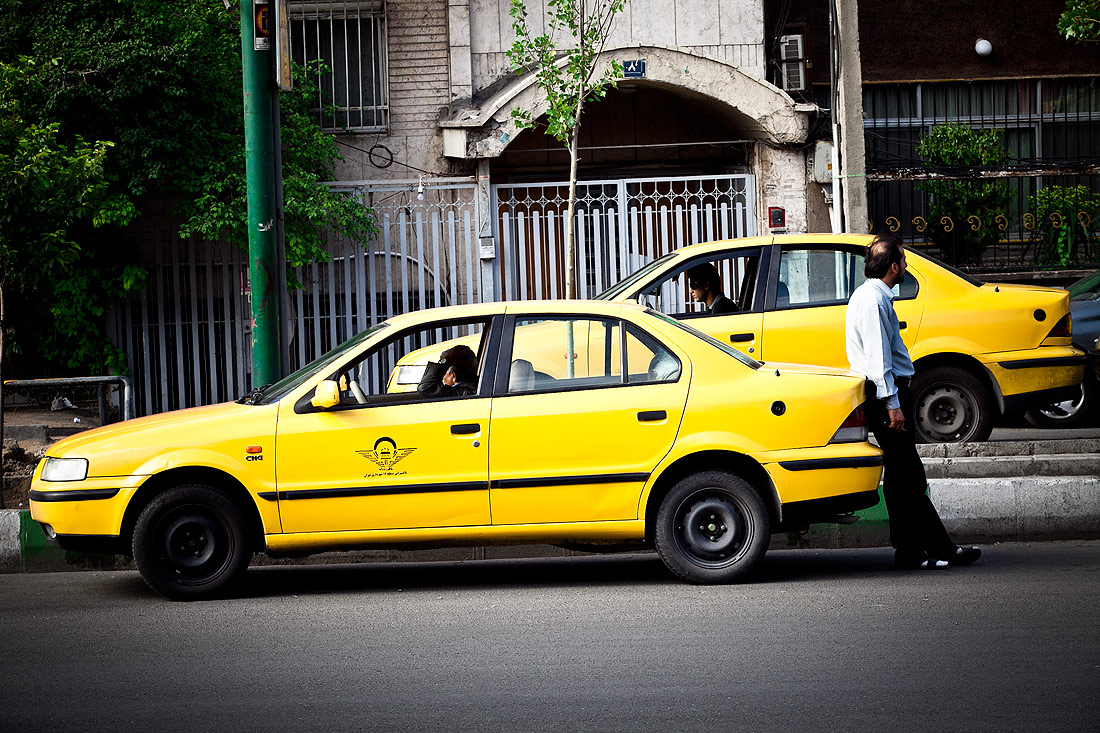In a bid to curb air pollution in cities, the government in collaboration with local banks and carmakers introduced a taxi renovation scheme in 2016 named Nosazi. The plan (sending the old cabs to the junkyard in exchange for a new vehicle) has been successful to some extent but many taxi drivers say they simply cannot afford the new cars despite the bank loan.
For participating in the scheme, cabbies are required to register their old clunkers on the website Nosazi.org. According to the website, their cars need to be over ten years old to be eligible for enrollment.
After enrollment, each driver needs to deliver his old car to the scrap yard to be able to get a 50-million-rial ($1,160) coupon. Through the scheme, they are given 200 million rials ($4,600) in loan at 16% which they are required to pay back in 48 monthly installments of 5.7 million rials ($132).
The drivers have four options to choose the replacement to their old car: Iran Khodro’s Samand or Peugeot 405, or SAIPA’s Ario (Zotye Z300) or Pars Khodro’s Chinese-derived Brilliance H230.
After the coupon value and the loan are reduced from the vehicle’s total price, the driver needs to pay the remaining upfront, which for Samand translates into $3,500 down payment, $1,600 for the Peugeot 405, Ario $5,800 and Brilliance $4,600 in rial equivalent.
Many drivers on the renovation scheme website have posted comments that they neither can afford the initial payment nor the monthly installments.
Not playing with words, one driver writes, “We hardly make ends meet. How are we supposed to pay such a huge debt?”
Another driver writes, “Maybe in major cities, drivers are better off and can afford the installments and initial payments. In provincial towns that is almost impossible.”
The comments do not end here. Many taxi drivers have called on authorities to widen the choice of vehicles offered through the scheme. For instance one writes that drivers should be allowed to choose whichever version of each model they want. Currently, drivers can only pick the model.
Furthermore, one of the other complaints in the comments is that the vehicle’s age is not a reasonable measure for assigning the cabs to the scrap yard. One driver who owns a 2013-built Samand says his vehicle is so worn out that it is unfit for the roads but he is not eligible for enrolment. He adds that he cannot afford to replace the car on his own (without the bank loan).
With 80,000 pollution-related deaths every year, Iran is among the top five countries in terms of air pollution mortality.
In Tehran, outdated vehicles are said to be responsible for a staggering 80% of the air pollution. Taxis, which hardly account for 2% of the public transport fleet, contribute 18% to the toxic air.
Tehran Municipality’s environment and sustainable development department director Sadr Alipour says, “There are 80,000 taxis in Tehran of which 11,000 (26%) are worn out and should be replaced.”
Union’s Support
The renovation scheme has the support of Islamic Republic of Iran Taxi Union. The union head Morteza Zameni says, “When the renovation scheme was launched in February 2016, there were 185,000 gas guzzlers in the taxi fleet. Through the scheme, 61,000 of the old taxis are now in the junkyard and were replaced with new cars.”
He says by March 2019 all the reaming old taxis will be replaced and adds that replacing the aging taxis is mandatory and municipalities will not issue permits to cabs built 10 years ago.
In the current fiscal that ends in March, 68,000 drivers have registered with the scheme.
The union boss promised that “after the old taxi is scrapped, the owner will receive the new vehicle on the same day.” However, on the Nosazi website, many drivers have complained about delays.
While the introduction of such schemes has always been welcomed by environmentalist, NGOs and the public at large, there is much about that should be revised.
In addition to considering the drivers’ demand for easier installments and reduced initial payments, the policymakers should also reconsider the cars sold through the scheme. Two of the vehicles, namely Peugeot 405 and Samand, have always been singled out by critics for high emissions, poor mileage and flouting safety rules.


